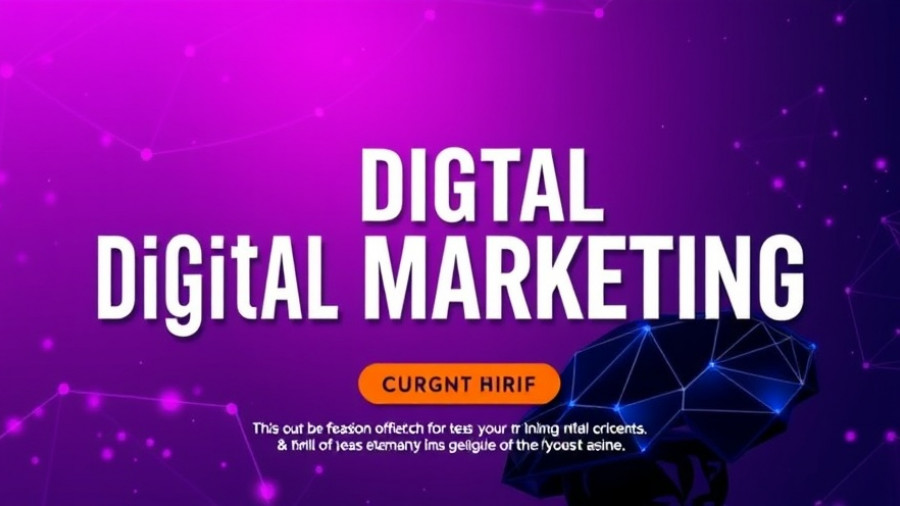
The Unseen Influence of Cult Brands in Today's Market
Brands like Nike, Apple, and others have transcended their roles as mere product providers; they have become cult-like phenomena that influence not only consumer behavior but also shape cultural conversations. Their success can be attributed to a deeply ingrained brand identity and strategic marketing approaches that connect on an emotional level with their audience. This article explores the psychology behind why consumers gravitate towards these brands and how businesses can learn from them.
The Essence of Belonging in Branding
At the core of a cult brand is the sense of belonging it creates for its customers. When consumers have a strong alignment with a brand’s values and mission, a community forms. Brands frequently leverage storytelling techniques in marketing campaigns to foster this connection, making consumers feel part of something larger than themselves. For instance, Nike’s marketing strategy often highlights athletes overcoming adversity—a representation that resonates with millions and ignites a deep-seated emotional response.
Nike’s Strategy: More Than Just Products
The Nike marketing strategy focuses not only on the quality of its athletic gear but on building a narrative that inspires its customers. The brand uses visual identity consistency across platforms to ensure that consumers recognize and recall their message easily. This approach creates a cohesive brand experience that fosters loyalty and trust.
Lessons for Small Businesses: Building Your Own Cult Brand
While the scale of large corporations may be daunting for small business owners, the underlying principles of cult branding can still be applied. Crafting a unique value proposition statement, focusing on customer experience, and promoting an authentic brand story can help smaller brands capture their target audience's attention. Engaging through social media content creation best practices can also be a powerful tool in connecting with consumers in a relatable way.
Understanding Consumer Behavior: The Role of Pandemic Consumerism
The global pandemic has reshaped consumer behavior dramatically, leading individuals to seek comfort in brands they feel they can trust. Studies have shown that during crises, consumers gravitate towards brands demonstrating social responsibility and a commitment to community welfare. This shift presents a valuable insight for marketers: aligning brand messaging with consumer expectations can reinforce loyalty and increase retention rates.
The Power of Community Engagement
Brands that build strong communities often see significant benefits, including enhanced customer loyalty and higher engagement levels. Companies are increasingly recognizing the importance of platforms that foster interaction among customers, such as social media and forums. Ensuring that employees advocate for your brand can create authentic conversations and strengthen overall company culture.
Future Predictions: The Evolving Landscape of Branding
As the market continues to evolve, brands will have to adapt to digital transformation trends. Artificial intelligence (AI) and data analytics tools are becoming indispensable in understanding consumer preferences and personalizing marketing strategies. The ability to create tailored experiences will likely set successful brands apart, further establishing their cult-like influence.
Conclusion: Your Journey to Cult Brand Status Starts Here
The secrets behind cult brands extend beyond just their marketing; they reflect a deep understanding of consumer psyche and behavior. For businesses aiming to replicate this success, it’s crucial to prioritize a strong brand identity, consistency in messaging, and community engagement. Implementing these strategies thoughtfully can help you carve out your own space in a competitive marketplace.
To take your first steps towards building a cult brand, consider engaging with branding services that align with your business mission and values. With the right strategies and dedication, every brand has the potential to make a lasting impact.
 Add Row
Add Row  Add
Add 




Write A Comment